Postmortem was not the game I initially wanted to make - it (de)evolved from many over-ambitious designs and prototypes inspired by studies in ethnic conflict and a book a friend lent me. But my goals never changed.
Origins
 Streets of Postmortem as I always imagine them. One of many reference photos inspired by my year in Belfast
Streets of Postmortem as I always imagine them. One of many reference photos inspired by my year in BelfastAfter college, I spent a year pursuing my masters in North Ireland, studying about ethnic and ideological conflicts such as the Troubles, Rwanda, Palestine and Isreal or the Bosnia-Herzegovina genocide. While it had nothing to do with game development, it really influenced me personally and inspired many themes and motifs I wanted to explore via games. That is when I first started writing design docs and coding what would eventually evolve into Postmortem. The idea of playing as Death came a year later, after I read Death with Interruptions by Jose Saramago. All this further fueled by the advent of narrative / experimental games such as Stanley's Parable, The Walking Dead, Home or Dear Esther.
My first game design and prototype was a complex RPG "The Bridge" akin to Fallout in gameplay: you were thrown into a country torn by ethnic conflict, helping one of three big factions win a bid war for constructing an economically-vital bridge and indirectly influencing the future. Needless to say, that proved a little too ambitious, so I scaled down to a more manageable action-RPG game called "The Island" that would explore the concept of player's honesty. But that too was a bit too big at the time, so after a few more ideas and late-night Facebook chats with a friend, I finally arrived at Postmortem, a project of just the perfect size and scope. That's how the creative process works - old projects never die, they merely evolve.... and maybe one day, come back to life again.
Goals
Through all these concepts my hope has been to involve the player on a personal level, going for the opposite of traditional game's "escapism". I don't want players to think "how do I win?" but "I must take an innocent life, how do I decide?" Even if you believe your choice will have beneficial consequences, do you really have the right to take someone's life based on an assumption? What if your "hunch" is wrong? How much research is enough to warrant an "educated guess" - or perhaps, the less you know the fairer you are? I really want to put the player in Death's moral shoes and consider that sometimes our choices might have unintended consequences.
Evoking those questions in the player's mind is definitely challenging. In my first alpha test, my tester based their playthrough around a certain problematic aspect of the game world, assuming that "fixing it" was the goal. It made me realize just how ingrained and natural the "play-to-win" mindset is. It is difficult to dispel that notion, but given the numerous design tweaks we've undergone and the feedback from our recent Beta Testing, we're pretty pretty confident we've hit the mark!
Lessons Learned
One of the keys was scaling down to 2D, which proved far more manageable than trying to make 3D models and textures with my lacking programmer-art skills. Plenty of royalty-free sprites, tilesets, vfx etc. can be found online at sites like OpenGameArt.org or CGTextures.com, and many more ripped from classic SNES titles as well. Perfect placeholders.
The second key was getting the fully playable Alpha prototype actually finished back in January 2013. From the initial main menu, through the whole game sequence with all the features in a basic form, all the way to end credits. Sure, the graphics were placeholders ripped from Chrono Trigger, the menus simple white-on-black title cards with no mouse support, and some features barely working... but it was playable. It was a game. It proved I could get it done; and it really shifted my mindset from "I am making the game" to "I made the game; now I refine it".
And last, perhaps most important key, was setting a non-neogtiable, but reasonable release date for myself. Like previous attempts, I did reach a point of losing motivation and fizzling out. Not wanting to waste my efforts again, I looked at what I had to do, thought how long it might take, and picked a date. Whatever state I could get the game to by then, even if with placeholders or missing features, I'd just release it. Period. It was exactly what I needed to boost my motivate and build a development timeline around. Even tho much has changed since, two weeks before release, I must say - dear god, it worked!
With something to show for myself, I announced the game and slowly (and sometimes frustratingly) built a great team of artists. It was difficult at times, with people coming and going, ignoring my emails for weeks, or flat out not delivering promised assets. But through that, I managed to "filter" out the flakes and keep the talented and reliable artists. In the end, it's proven more than worth it, as their input (both on artistic and design fronts) really pushed the game to a new degree of quality that surpassed my own expectations.
Find out more about Postmortem and Vote on on Steam Greenlight!
What is Postmortem?
Postmortem is a FREE Indie narrative-exploratory game that will stress your moral compass this August 15th! Think The Walking Dead meets Home and The Last Express with a dash of To The Moon - a good mix of exploration, conversation, some puzzles, discovering clues etc.
You are an agent of Death sent to take ONE life
from a cast of influential and ambitious characters at a charity Gala, in a rich and complex setting of industrial-revolution, conflict-torn country.
How can your choice change the fate of the nation?
How do you decide? And what other effect could your involvement have? How much should you meddle with mortal affairs?
How do you decide whom to Kill?
It's *entirely* up to you - Learn as much as you deem sufficient before you make the decision, and watch how your choice and involvement might (or might not!) influence the nation. And after... well, I'm not at liberty to say ;)
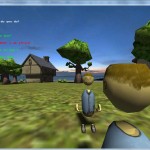
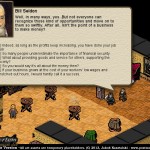


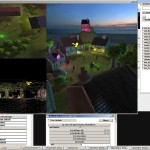
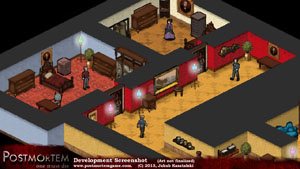

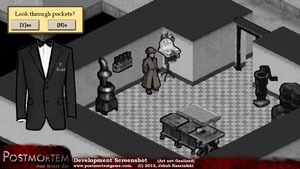
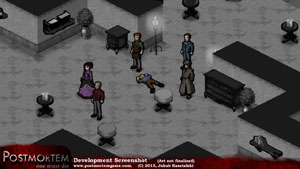
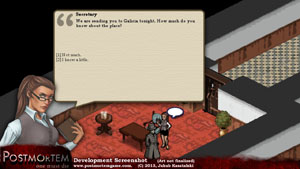
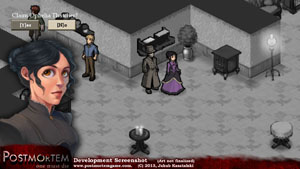
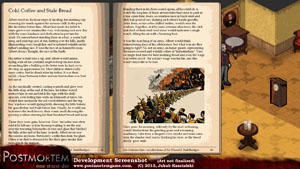
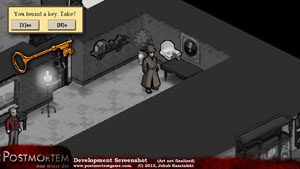

In all honesty, I'm glad that the game went 2D. No matter if 2D or 3D, a game can still very much be an immensely unique and fun experience. It just depends on the way it's made. I'm looking forward to the release!
Aye, and I always cite The Walking Dead as a wonderful example of how you can make a "cartoony" game that still tackles serious motifs and creates a serious atmosphere. Many other indies too, like Home or Lone Survivor.